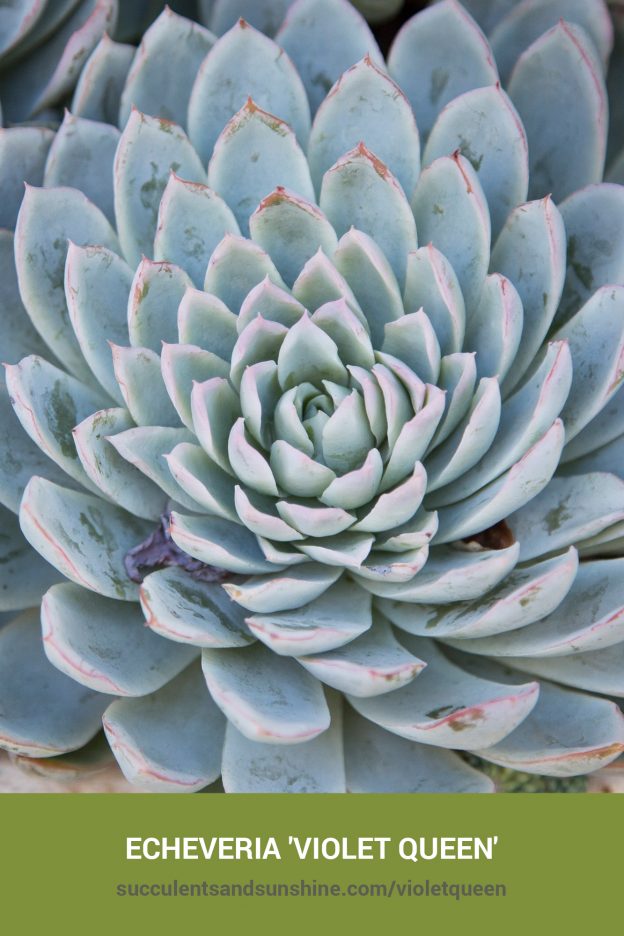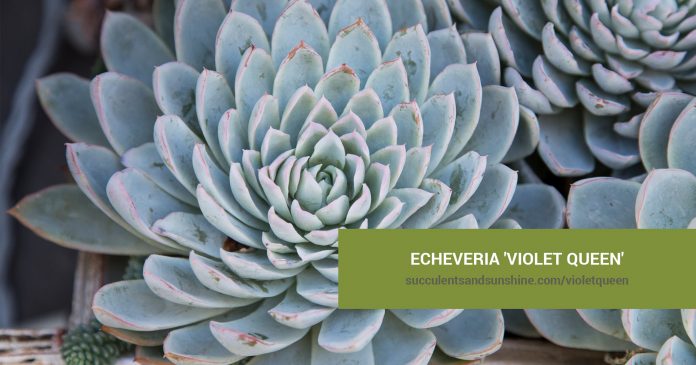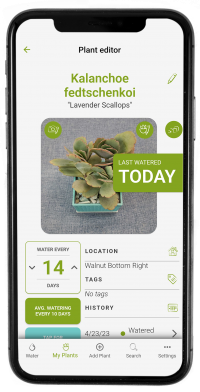Care and Propagation Information
General Care for Echeveria ‘Violet Queen'
Echeveria ‘Violet Queen' is a great addition to xeriscaped gardens. It provides year-round color in outdoor gardens. The flowers attract hummingbirds.
Watering
Echeveria ‘Violet Queen' has typical watering needs for a succulent. It's best to use the “soak and dry” method, and allow the soil to dry out completely between waterings.
Where to Plant
‘Violet Queen' is not cold hardy, so if you live in a zone that gets colder than 20° F (-6.7° C), it's best to plant this succulent in a container that can be brought indoors. It does well in full to partial sun.
Plant in an area of your garden that gets 6 hours of sunlight a day. If planting indoors, place in a room that gets a lot of sunlight, such as near a southern-facing window (if you're in the Northern Hemisphere).
How to Propagate Echeveria ‘Violet Queen'
Echeveria ‘Violet Queen' can be propagated from offsets or leaves.
Offsets
‘Violet Queen' will produce small rosette offsets. Cut the offsets off from the main stem with a sharp, sterile knife or scissors. Allow the offsets to dry for one to two days before laying on well-draining soil.
Leaves
To propagate ‘Violet Queen' from leaves, twist a leaf from the mother plant. Be sure that none of the leaf remains on the stem, or you will have a smaller chance of success.
Allow the leaf to dry out for several days so that the end callouses over, and then place on well-draining soil. Water whenever the soil is completely dry.





